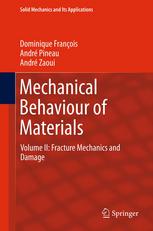

Most ebook files are in PDF format, so you can easily read them using various software such as Foxit Reader or directly on the Google Chrome browser.
Some ebook files are released by publishers in other formats such as .awz, .mobi, .epub, .fb2, etc. You may need to install specific software to read these formats on mobile/PC, such as Calibre.
Please read the tutorial at this link: https://ebookbell.com/faq
We offer FREE conversion to the popular formats you request; however, this may take some time. Therefore, right after payment, please email us, and we will try to provide the service as quickly as possible.
For some exceptional file formats or broken links (if any), please refrain from opening any disputes. Instead, email us first, and we will try to assist within a maximum of 6 hours.
EbookBell Team

4.0
26 reviewsDesigning new structural materials, extending lifetimes and guarding against fracture in service are among the preoccupations of engineers, and to deal with these they need to have command of the mechanics of material behaviour. This ought to reflect in the training of students. In this respect, the first volume of this work deals with elastic, elastoplastic, elastoviscoplastic and viscoelastic behaviours; this second volume continues with fracture mechanics and damage, and with contact mechanics, friction and wear. As in Volume I, the treatment links the active mechanisms on the microscopic scale and the laws of macroscopic behaviour. Chapter I is an introduction to the various damage phenomena. Chapter II gives the essential of fracture mechanics. Chapter III is devoted to brittle fracture, chapter IV to ductile fracture and chapter V to the brittle-ductile transition. Chapter VI is a survey of fatigue damage. Chapter VII is devoted to hydrogen embrittlement and to environment assisted cracking, chapter VIII to creep damage. Chapter IX gives results of contact mechanics and a description of friction and wear mechanisms. Finally, chapter X treats damage in non metallic materials: ceramics, glass, concrete, polymers, wood and composites. The volume includes many explanatory diagrams and illustrations. A third volume will include exercises allowing deeper understanding of the subjects treated in the first two volumes.